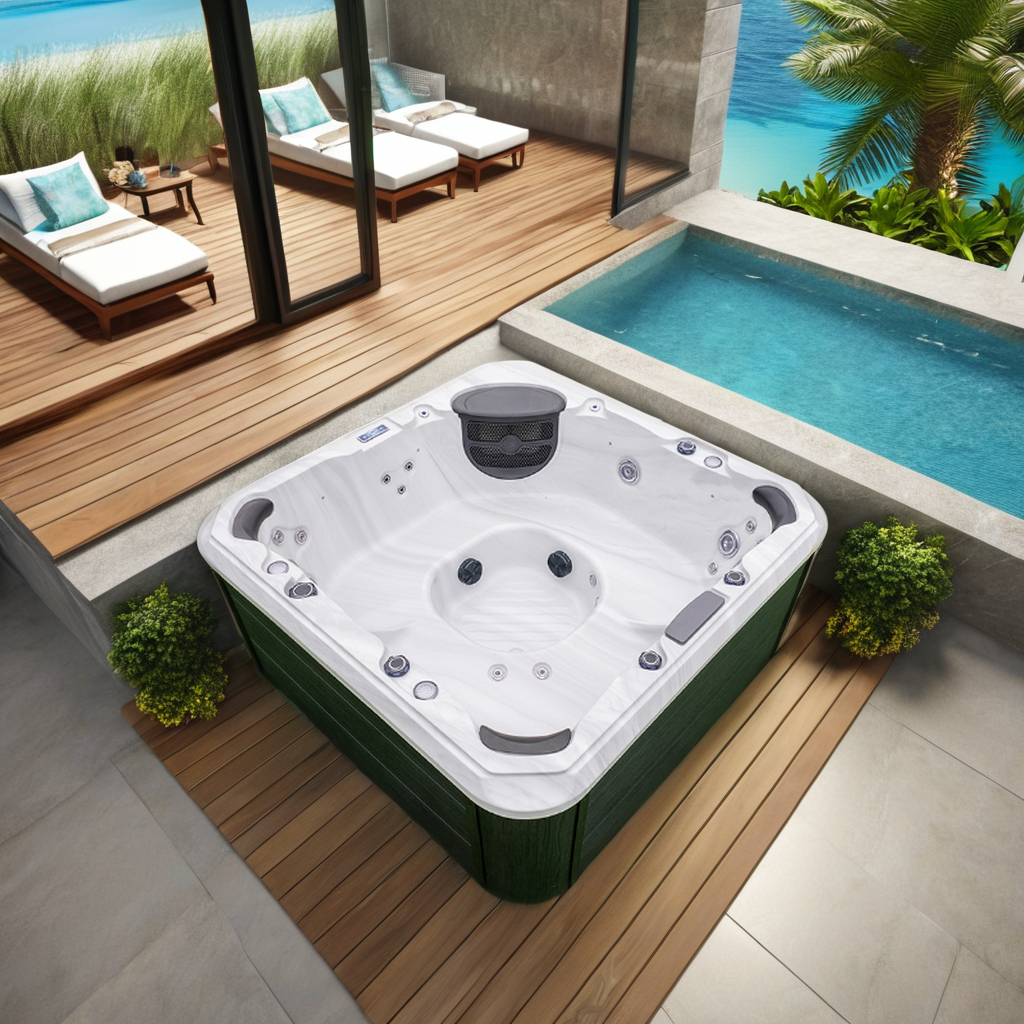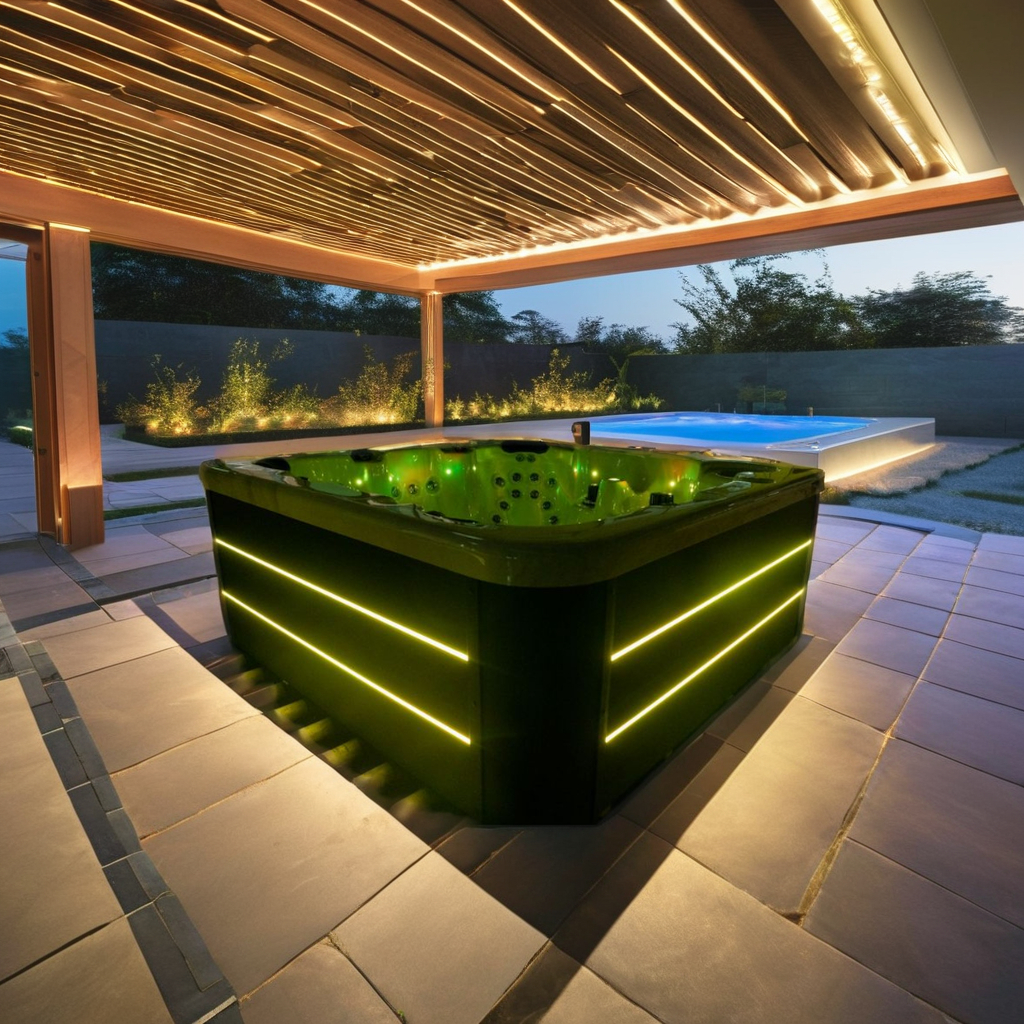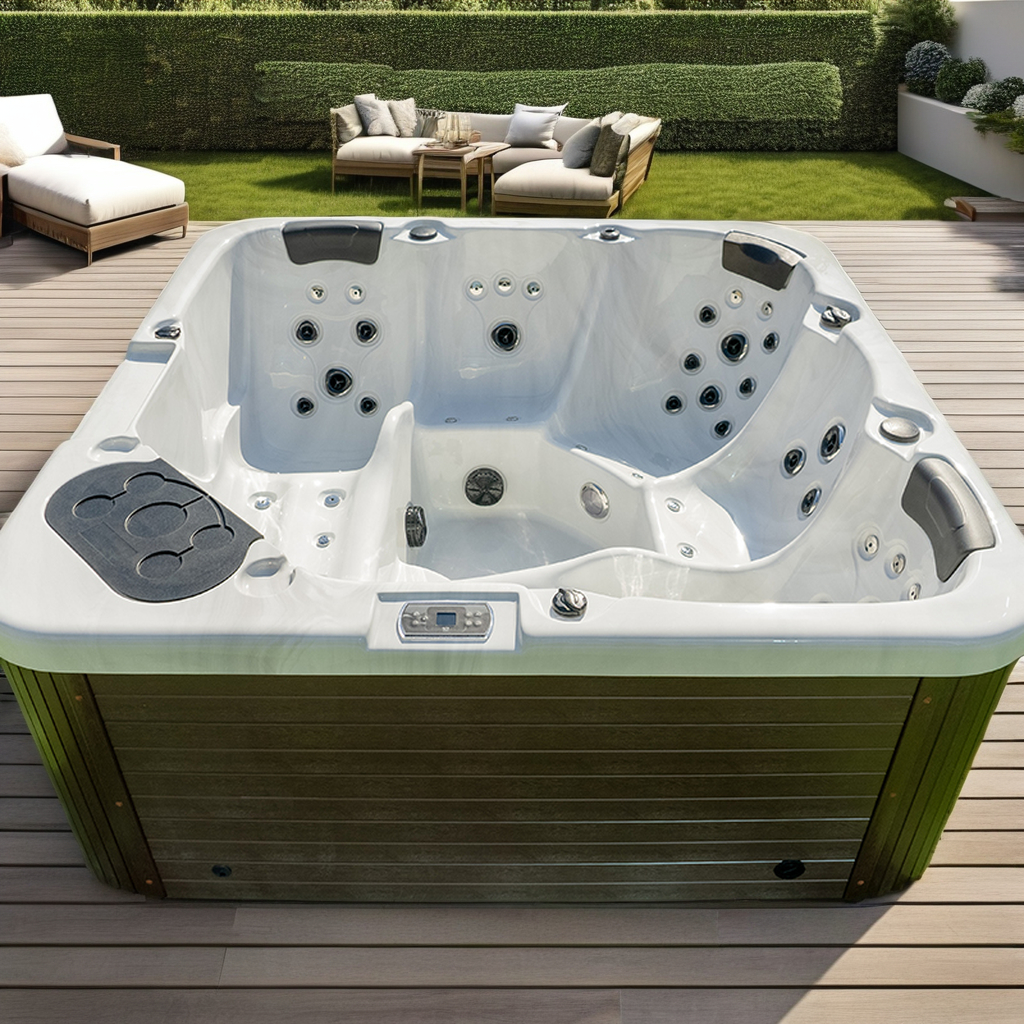
What are the material choices for outdoor spa bathtubs?
2025-08-01 15:35An outdoor spa bathtub is an ideal facility for comfort and relaxation. It can provide a spa experience for the home, resort or hotel, helping users relieve stress, relax and even provide some rehabilitation treatment.
As market demand continues to grow, the types and styles of outdoor spa bathtubs have also become diversified, and one of the most critical factors is the choice of material. The material not only directly affects the beauty, comfort and durability of the bathtub, but also involves whether it can withstand the test of the outdoor environment, such as weather changes, UV radiation and moisture.
This article will explore the common materials of outdoor spa bathtubs in depth, analyze the advantages and disadvantages of different materials, and help consumers make wise decisions when purchasing.

What are the materials of outdoor spa bathtubs?
There are many types of materials for outdoor spa bathtubs, each with its own unique characteristics and applicable scenarios. The most common materials for outdoor spa bathtubs include acrylic, fiberglass, wood, stainless steel and composite materials. Here is a detailed introduction to each material:
1. Acrylic
Acrylic is one of the most common materials for making outdoor spa bathtubs. It is a polymer plastic that is widely used for its excellent durability and aesthetics. Acrylic spa bathtubs have a smooth appearance, a shiny surface, and a warm feel, making them the first choice for many consumers.
Advantages:
· Strong durability: Acrylic spa bathtubs can resist UV radiation and weathering, and are not easy to fade or age.
· Good thermal insulation: Acrylic materials have good thermal insulation, which can effectively maintain water temperature, reduce heat loss, and provide a more comfortable bathing experience.
· Simple maintenance: The surface of acrylic outdoor spa bathtubs is not easy to accumulate scale, and it is relatively simple to clean, and it is not easy to accumulate bacteria and dirt.
· High aesthetics: The surface of acrylic spa bathtubs is smooth and colorful, and different colors and styles can be selected according to personal preferences.
Disadvantages:
· Easy to scratch: The surface of acrylic is relatively soft and can be easily scratched by sharp objects, affecting the appearance.
· Heavier weight: Compared with some other materials, acrylic is heavier and requires appropriate support.
· Applicable scenarios: Suitable for daily home use, especially in warm climates, and suitable for people who want to enjoy a comfortable warm water experience in an outdoor spa bathtub.

2. Fiberglass
Fiberglass is another common outdoor spa bathtub material, usually used in the manufacture of bathtub liners. Fiberglass is a composite material woven from glass fibers, usually combined with resin to enhance its strength and durability.
Advantages:
· Lightweight: Fiberglass spa bathtubs are relatively light and easy to transport and install.
· Strong and durable: Fiberglass materials are very strong and can withstand large impacts and are not easily damaged.
· Corrosion resistance: Fiberglass is not affected by chemicals, salt or moisture in the water, so it is very suitable for outdoor environments.
· Good thermal insulation: Fiberglass has good heat retention properties and can effectively maintain water temperature.
Disadvantages:
· Easy to fade: If exposed to strong sunlight, the surface of the fiberglass spa bathtub may fade, affecting the appearance.
· Requires additional maintenance: The fiberglass surface may absorb oil and dirt, so it needs regular cleaning and maintenance.
· Applicable scenarios: Suitable for bathtubs that need to be used for a long time and are not easy to deform, especially suitable for places such as public baths or resorts.
3. Wood
The outdoor spa bathtub made of wood is favored by many consumers who like natural style for its natural beauty and unique texture. Wooden outdoor spa bathtubs are usually made of waterproof hardwood (such as cedar, redwood, oak, etc.) and have a traditional and rustic appearance.
Advantages:
· Beautiful and natural: The wood spa bathtub gives people a natural and warm feeling and can blend well with the natural environment.
· Good thermal insulation: Wood has natural thermal insulation, which can maintain water temperature to a certain extent and reduce heat loss.
· Corrosion resistance: Specially treated wood has strong corrosion resistance and can withstand humid environments.
Disadvantages:
· Complex maintenance: Wooden outdoor spa bathtubs need regular maintenance and application of waterproof protective agents, otherwise they are prone to rot or deformation.
·Higher price: High-quality wood costs more and is more expensive to maintain in the long term.
·Susceptible to environmental influences: Wood is very sensitive to changes in temperature and humidity, so it needs regular inspection and maintenance.
·Applicable scenarios: Suitable for homes or holiday homes that pursue natural, comfortable and retro styles, especially in natural environments such as forests and mountains.
4. Stainless Steel
Stainless steel is a modern outdoor spa bathtub material, which is chosen by some consumers for its sturdy, durable and modern appearance. Stainless steel outdoor spa bathtubs usually have a metallic luster, giving a simple and cool visual effect.
Advantages:
·Very durable: Stainless steel is very strong, impact-resistant and corrosion-resistant, suitable for long-term exposure to outdoor environments.
·Easy to clean: The surface of stainless steel outdoor spa bathtub is smooth, very easy to clean and not easy to accumulate dirt.
·Modern aesthetics: Stainless steel outdoor spa bathtub has a modern and industrial style, suitable for modern homes or commercial places.
Disadvantages:
·Easy to scratch: Although stainless steel is very strong, the surface is easily scratched and scratched.
· Strong thermal conductivity: Stainless steel outdoor spa bathtubs have strong thermal conductivity, so if there is no proper insulation, the water temperature may drop quickly.
· Applicable scenarios: Suitable for consumers who pursue modern minimalist style, especially in high-end resorts, luxury hotels and other places.
5. Composite Materials
Composite materials usually combine different types of materials (such as acrylic, fiberglass, resin, etc.) to form a composite material that is both light and strong. Composite materials can imitate the appearance of wood, stone, and even marble, combining beauty and durability.
Advantages:
· Strong durability: Composite spa bathtubs combine the advantages of different materials and have excellent durability, corrosion resistance and impact resistance.
· Diverse appearance: Composite materials can be manufactured in a variety of styles and appearances to meet the needs of different consumers.
· Lightweight: Composite materials are much lighter than pure wood or stainless steel, making them easier to install and move.
Disadvantages:
· Higher price: High-quality composite spa bathtubs are more expensive to manufacture and more expensive.
· Poor long-term durability: Although composite materials are very strong, some types of composite materials may show signs of aging after long-term use.
· Applicable scenarios: Suitable for consumers who need diverse appearance and long-term use, especially for those places that value both aesthetics and long-lasting service life.

What is the typical warranty on your spa systems?
Our spa systems come with warranties ranging from 2 to 5 years, depending on the components. Structural parts carry a 5-year warranty, shells are covered for 3 years, and jets, valves, pillows, and other components are backed for 2 years. We stand behind every unit we sell and supply, ensuring high quality and customer satisfaction. Whether you buy a single unit or wholesale batch, you receive full manufacturer support.
